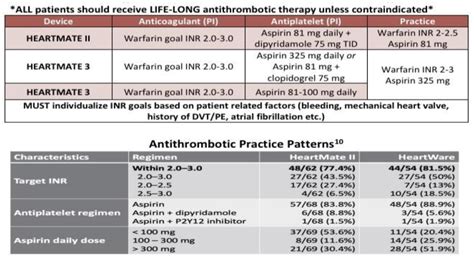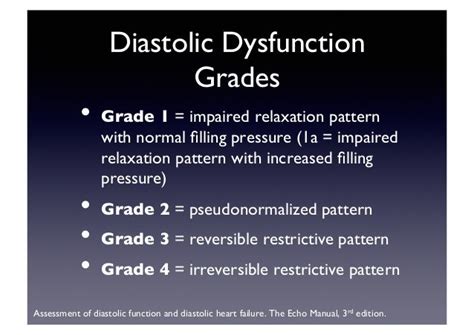mild lv diastolic dysfunction means | can you improve diastolic dysfunction mild lv diastolic dysfunction means As your top heart chambers continue to try to pump blood into your ventricles, you may experience pressure buildup. In turn, you may have fluid and pressure . See more D is the fourth (number 4) letter in the alphabet. It comes from the Greek Delta and the Phoenician Dalet. Meanings for D. In education, D is a failing grade; In electronics, D is a standard size dry cell battery. In music, D is a note sometimes named “Re”. In Roman numerals, D also means the number 500.
0 · medication for lvdd problems
1 · grade i mild diastolic dysfunction
2 · diastolic function is mildly abnormal
3 · can you improve diastolic dysfunction
4 · abnormal left ventricular relaxation symptoms
5 · abnormal left ventricular filling pattern
6 · abnormal left ventricular diastolic filling
7 · abnormal diastolic function is noted
Dacromet 320/500 Coating. DACROMET 320 is a an aluminium-grey, non-electrolytic, thin coating for anti-rust protection of steel, cast iron and other ferrous metal parts. It is composed of thin zinc and aluminium plates in a chrome oxide mould. Dacromet 500 also has an integrated lubricant.
Diastolic dysfunction is a problem with diastole, the first part of your heartbeat. During diastole, your lower heart chambers (ventricles) relax as they fill with blood. Diastolic dysfunction may occur when your ventricles are stiff and don’t relax properly. When this happens, your ventricles don’t fill with blood as they . See more

are any rolex watches space certifies
Anyone may develop diastolic dysfunction, but you are more likely to get it if you are: 1. Older than 70. 2. Physically inactive. 3. Smokeor use tobacco products. . See moreAs your top heart chambers continue to try to pump blood into your ventricles, you may experience pressure buildup. In turn, you may have fluid and pressure . See moreDiastolic dysfunction is common in older adults. Some experts estimate that about half of all adults over age 70 have some level of diastolic dysfunction. It’s less . See more

medication for lvdd problems
Left ventricular diastolic dysfunction (LVDD) is a condition that affects your heart’s ability to fill up with blood before sending the blood out into your circulation. Diastolic dysfunction is when the heart’s ventricles abnormally stiffen, which prevents the ventricles from relaxing as they should and prevents them from filling up. This .
If you have diastolic heart failure, your left ventricle has become stiffer than normal. Because of that, your heart can't relax the way it should. When it pumps, it can't fill up . Diastolic heart failure means the heart does not relax correctly between beats. In both cases, the heart is not pumping blood as efficiently as . Diastolic heart failure, also known as heart failure with preserved ejection fraction (HFpEF), is a condition in which your heart’s main pumping chamber (left ventricle) becomes . Diastolic dysfunction is a problem with diastole, the first part of your heartbeat. Typically, your lower heart chambers relax and fill with blood during diastole. Diastolic dysfunction occurs when your lower heart chambers don’t relax as they should. Over time, the dysfunction can lead to diastolic heart failure.
grade i mild diastolic dysfunction
diastolic function is mildly abnormal
Left ventricular diastolic dysfunction (LVDD) is a condition that affects your heart’s ability to fill up with blood before sending the blood out into your circulation.

Diastolic dysfunction is when the heart’s ventricles abnormally stiffen, which prevents the ventricles from relaxing as they should and prevents them from filling up. This disrupts the flow of blood to and from the organs of the body.
If you have diastolic heart failure, your left ventricle has become stiffer than normal. Because of that, your heart can't relax the way it should. When it pumps, it can't fill up with blood as.
Diastolic heart failure means the heart does not relax correctly between beats. In both cases, the heart is not pumping blood as efficiently as it should. A person can experience. Diastolic heart failure, also known as heart failure with preserved ejection fraction (HFpEF), is a condition in which your heart’s main pumping chamber (left ventricle) becomes stiff and unable to fill properly. When your heart isn’t able to relax fast enough, it’s called diastolic dysfunction (DD). DD is dangerous and is believed to be associated with congestive heart failure symptoms in patients who have what’s called preserved left ventricular ejection fraction, according to cardiologist Wael Jaber, MD. Advertisement. Left ventricular dysfunction can be a silent and potentially deadly condition. "What's terribly important is it can be there without symptoms and can lead to bad things happening: death, shortness of breath, fainting hospitalization."
Heart failure with preserved ejection fraction (HFpEF), also called diastolic heart failure This is a type of left-sided heart failure. The left ventricle can't relax or fill fully. Left-sided heart failure occurs when the heart loses its ability to pump blood. It often happens in people with high blood pressure and certain heart conditions. You may experience systolic heart failure or diastolic heart failure.
Diastolic dysfunction is a problem with diastole, the first part of your heartbeat. Typically, your lower heart chambers relax and fill with blood during diastole. Diastolic dysfunction occurs when your lower heart chambers don’t relax as they should. Over time, the dysfunction can lead to diastolic heart failure. Left ventricular diastolic dysfunction (LVDD) is a condition that affects your heart’s ability to fill up with blood before sending the blood out into your circulation.
Diastolic dysfunction is when the heart’s ventricles abnormally stiffen, which prevents the ventricles from relaxing as they should and prevents them from filling up. This disrupts the flow of blood to and from the organs of the body. If you have diastolic heart failure, your left ventricle has become stiffer than normal. Because of that, your heart can't relax the way it should. When it pumps, it can't fill up with blood as. Diastolic heart failure means the heart does not relax correctly between beats. In both cases, the heart is not pumping blood as efficiently as it should. A person can experience.
Diastolic heart failure, also known as heart failure with preserved ejection fraction (HFpEF), is a condition in which your heart’s main pumping chamber (left ventricle) becomes stiff and unable to fill properly.
can you improve diastolic dysfunction
When your heart isn’t able to relax fast enough, it’s called diastolic dysfunction (DD). DD is dangerous and is believed to be associated with congestive heart failure symptoms in patients who have what’s called preserved left ventricular ejection fraction, according to cardiologist Wael Jaber, MD. Advertisement. Left ventricular dysfunction can be a silent and potentially deadly condition. "What's terribly important is it can be there without symptoms and can lead to bad things happening: death, shortness of breath, fainting hospitalization." Heart failure with preserved ejection fraction (HFpEF), also called diastolic heart failure This is a type of left-sided heart failure. The left ventricle can't relax or fill fully.
abnormal left ventricular relaxation symptoms
Bước 1: Quần chiếc khăn vuông của bạn lại thành hình chữ nhật mảnh. Bước 2: Luồn khăn xuống dưới tóc của bạn, sau đó buộc 1 nút thắt. Bước 3: Chỉnh lại cho cân hoặc hợp mắt, sau đó giấu phần khăn còn thừa xuống dưới tóc. .
mild lv diastolic dysfunction means|can you improve diastolic dysfunction


























